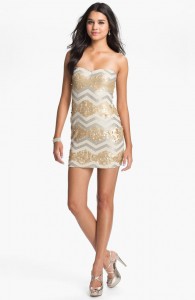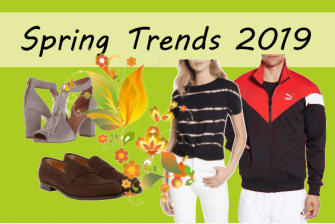Interview Attire to Best Impress Each Office Type
Social presence and appearance are the first things people notice about you, and few places is this more important than at an interview, when dressing to impress can be key to securing the job. And that can get complicated when we have more clothing options and flexibility—and office environments—than ever in this modern, competitive job market. So how can you make that terrific first impression at your next job interview?
These interview attire FAQs can help you navigate your wardrobe selections:
Q: What should I wear to an interview?
My answer is always, “It depends.” I believe that if you are polished in your grooming and current, you can push the envelope a bit to more strongly project your personal brand. Just remember that you should look professional and polished regardless of the type of job you’re seeking! Your interview attire might change depending on the job and office type, but even if there’s no company dress code, you should come in looking neat, tidy, and well dressed. That being said, it is perfectly acceptable and encouraged to ask about the company’s dress code while setting up the interview. That may help you prepare for the next steps.
Q: How do I dress for a “business casual” company?
For Men
For the most dependable business casual look, layer a sweater with a button-down. Neutral colors like brown, black, and navy are good choices, as they match many different shirt colors. Pair the layered top with khakis, gray chinos, or even dark-wash jeans (in a less formal environment, such as a startup company) for an easy interview outfit.
If you’re opting for a blazer, a light color is less harsh than a black or gray option. It’s a great piece because it straddles the boundary between business casual and business formal. Worn with a tie, it is more business formal; worn without a tie, it’s a solid option when you aren’t quite sure of the dress code.
As an extra tip, consider adding texture. Texture adds an instant sense of class and style to an otherwise ordinary ensemble. A textured blazer dresses up a button-down and slacks without looking stuffy or uptight. A corduroy blazer accomplishes the same thing, but must be current and well styled.
For Women
Women have more wardrobe options, which can make business casual even trickier. As a rule of thumb, it is always best to err on the side of dressing up one level from the company’s dress code.
A blazer is universally flattering and communicates the strength and polish that is important for an interview. Whether textured, patterned, or relaxed in style, a great blazer will keep your look on point. A blazer pairs well with a simple blouse or a crisp shirt, but even if you wear a white T-shirt and more casual shoes, the blazer will pull your look together! It can also be paired with a skirt or slacks (cotton or wool gabardine), or even dark-wash jeans for a more casual dress code. Versatility!
Your shoe and accessory selections can dress your outfit up or down. Shoes should be closed toe or peep toe, and not higher than approximately 3–4 inches. Your shoes do not have to be boring: a little pattern or color can add a punchy personal touch! You can also coordinate an earring smaller than a quarter, or a necklace that adds to the outfit. Accessories should not detract from you or make noise (which is why bangle bracelets are never good for business).
As an extra tip, don’t be afraid of prints. Although you should avoid anything too bright or flashy (animal prints, for example, aren’t usually interview appropriate, unless they are extremely subtle), a print can spice up an otherwise boring outfit while still looking professional. The same is true of adding texture. I love to dress clients in a faux or real suede or leather blazer or skirt!
Q: How do I dress for a “business formal” company if I want to look more modern?
For Men
While interviews at startup companies signify a more casual look, if you’re interviewing for any professional position, it’s important that you stick with a formal look. Of course, even within the “business formal” category, there’s a huge range of dress codes. Fortunately, you aren’t limited to the black suit, white shirt, and basic tie.
Use color to your advantage! Try colors that are modest but still eye catching, like a light-blue patterned tie that matches a striped shirt. You’ll add a touch of urban sophistication without sacrificing professionalism. You could also try a gray suit coat and pants, which is a modern-formal replacement for the black suit.
As an extra tip, choose your tie carefully! Ties don’t have to be boring, and they are a great way to communicate your personal brand. Feel free to experiment with unexpected colors (but leave the lime green or orange ties at home), although you should avoid anything too flashy, such as novelty ties with bizarre prints.
For Women
The question I get asked most often: “Should I wear a dress or slacks?” And frankly, some women look better in dresses and some in slacks! Wearing a dress exposes more skin, so ensure you are comfortable with bare arms or legs. Also, your shoes are more visible when you wear a dress. If you are more comfortable in lower profile shoes, you may do best to select slacks. Just determine your comfort level and assets and make your decision.
Option 1: A tasteful little black dress. This is the hallmark of a simple yet refined business wardrobe. Invest in a quality dress that skims the knee. A dress with a structured fit and nice details will be professional yet modern.
Option 2: A statement dress. Although your interview attire should be professional and conservative, that doesn’t mean you can’t experiment with color. A tasteful dress in an interesting color, such as a muted turquoise or deep red—whatever best complements your palette—is a good addition to your interview wardrobe. With a bright-colored dress, it is more important than ever that the piece covers you appropriately, so make sure that both the neckline and hemline are appropriate; avoid short dresses and low-cut, revealing necklines. And since a statement dress speaks for itself, your accessories can be simpler.
Option 3: A suit or a blazer with slacks. Suits with fine details or a bit of texture add that extra touch! To draw the interviewer into your communication zone, pair with a blouse that flatters your skin tone and eyes. Select a slacks style that flatters your body proportion, and the same with the blazer style (think length, lapel size, and zip or button closure). If your suit selection is more basic, enjoy a more interesting shoe and accessory.
Q: What about those finishing touches?
No matter how traditional or modern you dress, always make sure that each piece of your outfit fits well and is in good condition. Make sure your shirt is wrinkle free, and take the extra effort to ensure your slacks are pressed. Leave off cologne or perfume, which can aggravate sensitive noses. And keep your shoes in perfect condition—no scuffs!




Leave a Reply
You must be logged in to post a comment.